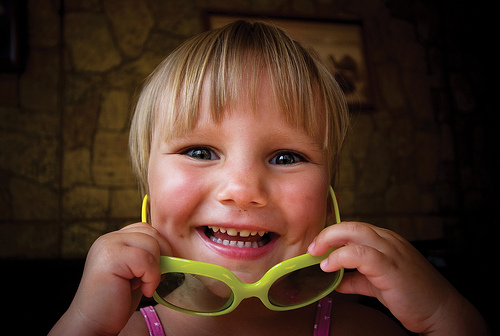Common childhood vision problems and the different causes behind them.
When it comes to simple vision problems, such as difficulty looking at near or far objects or having a hard time focusing in and out of words while reading, we, as adults, are often very good at identifying these tell-tale symptoms as something that may be going south with our vision. And while none of these situations are particularly delightful to deal with, we can often identify these vision problems right away so that they do not become a more serious issue in the future.
However, when it comes to our children’s eyes and vision, these problems can easily go unnoticed (and they often do) if they are not easily identified and shared with parents. Unfortunately, this could result in a serious lack of developmental learning and cognitive functions in children with undiagnosed vision problems.
According to several different childhood studies, the brain is not the only aspect of the body that is developing in our first few years of life―our early years are also some of the most important for our eyesight. However, a recent study done by Prevent Blindness America estimates that vision problems typically affect one in 20 preschoolers and one in four school-age children.
So, as a parent, how do you recognize that your child is suffering from vision problems? We have put together a list of some of the most common vision problems in children and the different causes behind them:
Complaining Of Headaches
If your child often complains of headaches after reading or being on the computer or reading for a significant amount of time, this may be a sign that they need glasses. Frontal and temporal headaches often occur when we strain the muscles in our eyes to focus on certain images or words, and this common head pain is one of the largest indicators that someone may need assistance with their vision.
A Lazy Eye
Amblyopia, a common eye disease often known as lazy eye, is one of the leading causes of vision loss in children. In fact, it affects about 120,000 children in the United States alone each and every year. If a child does not have two-eye binocular vision, there is a chance that they will have difficulty with sports, school, depth-perception, hand-eye coordination and any other activity that requires clear, binocular vision. Therefore, it is very important that amblyopia is indentified early, when it is more amenable to treatment
Sitting Too Close To The Television
Remember how your parents used to tell you that sitting too close to the TV could damage your eyes? While that may have been untrue, sitting too close to the TV may actually be a sign that your child is nearsighted. Nearsightedness, also known as myopia, is when moving closer to an object makes it clearer and easier to see. Another typical symptom of nearsightedness is squinting. This forces your eye to look through a small opening, which reduces the size of the blurred image on the back of the retina, temporarily improving your vision.
For more information about common childhood vision problems, as well as to schedule an annual eye examination for your children, be sure to contact OCLI today.
Image: Source
